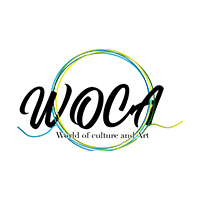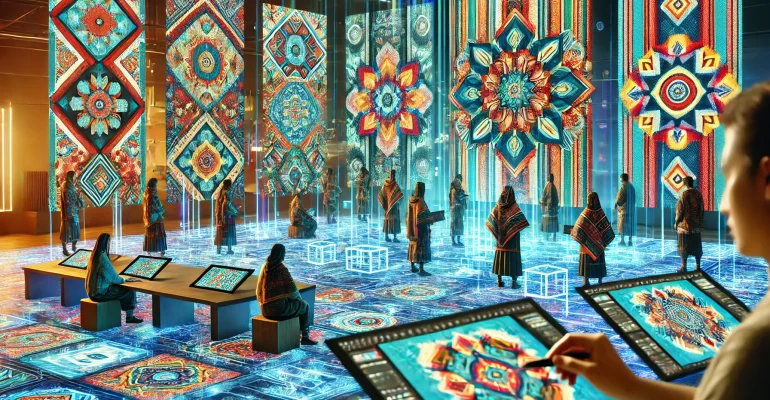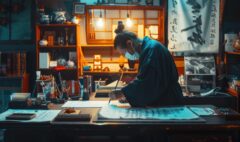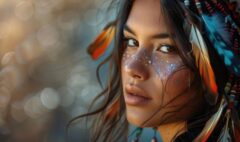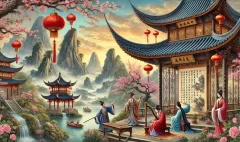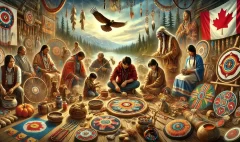Digital Innovations in Indigenous Art
Digital Innovations in Indigenous Art
In today’s digital age, technology is playing a crucial role in creating and sharing Indigenous art. Platforms like Woca are at the forefront of this movement, using digital tools to preserve and promote Indigenous art and culture. Digital innovations in Indigenous art have enabled artists to reach global audiences, create interactive and immersive experiences, and preserve traditional art forms in new, accessible formats. Let’s explore how technology is being used in Indigenous art and look at some exciting examples of digital art, virtual exhibitions, and online platforms. Through these innovations, the rich heritage and contemporary expressions of Indigenous art are being celebrated and shared more widely than ever before.
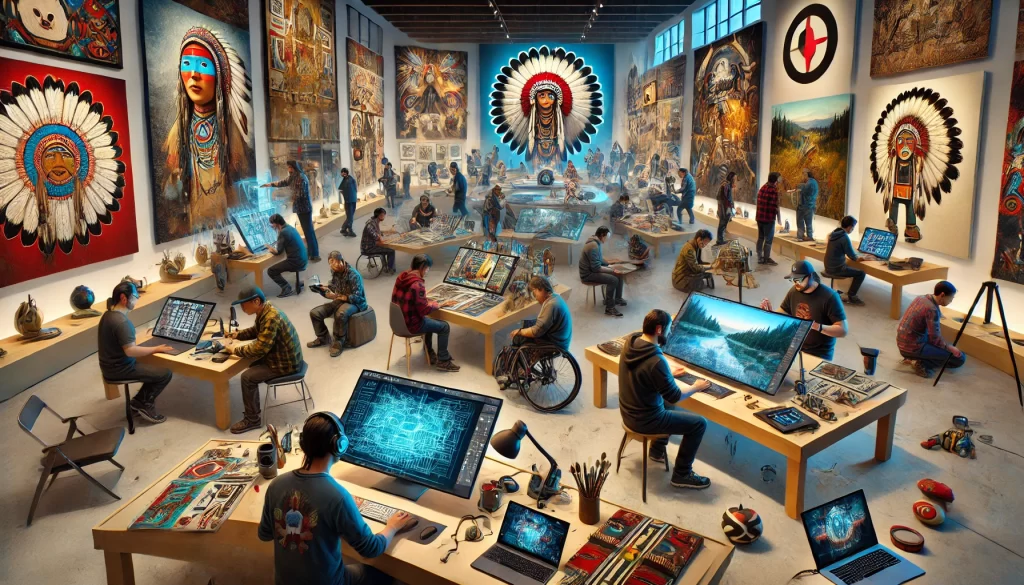
How Technology is Used in Indigenous Art
Digital innovations in Indigenous art are revolutionizing the way artists create, express, and share their work. Technology provides new mediums and platforms, enabling artists to experiment with innovative techniques and reach a global audience. Digital tools such as graphic design software, digital painting applications, and animation programs allow Indigenous artists to bring their visions to life in new and exciting ways.
Artists like Casey Koyczan use 3D modeling, virtual reality (VR), and interactive installations to explore themes of identity and cultural survival, blending traditional stories with contemporary visuals. Nico Williams merges traditional beadwork with digital art to delve into Indigenous identity. Skawennati employs virtual environments and machinima to create cyberpunk art that reflects Mohawk culture. Raven Two Feathers tells stories rooted in their Cherokee, Seneca, and Cayuga heritage through digital media, and Jordan Bennett integrates digital design with traditional Mi’kmaq art forms. These digital innovations not only preserve and promote cultural heritage but also push the boundaries of artistic expression, creating immersive and interactive experiences that engage audiences worldwide.
- Creating Digital Art
Many Indigenous artists are now using digital tools to create stunning artworks. These tools allow artists to experiment with new techniques and reach a wider audience. Digital art can include everything from graphic design to digital painting, animation, and multimedia projects. By using software and digital devices, artists can bring their visions to life in new and exciting ways.
- Casey Koyczan
Casey Koyczan is a Tlicho Dene interdisciplinary artist from Yellowknife, Northwest Territories, Canada. He explores themes of identity, technology, and cultural survival through his digital works.
Koyczan uses a variety of digital media, including 3D modeling, virtual reality (VR), and interactive installations. His work often delves into the relationships between Indigenous traditions and modern technology. One of his notable projects is “When Raven Became Spider,” which blends traditional Dene stories with contemporary sci-fi and superhero themes. This project was showcased in various exhibitions, highlighting the fusion of ancient narratives with futuristic visuals.
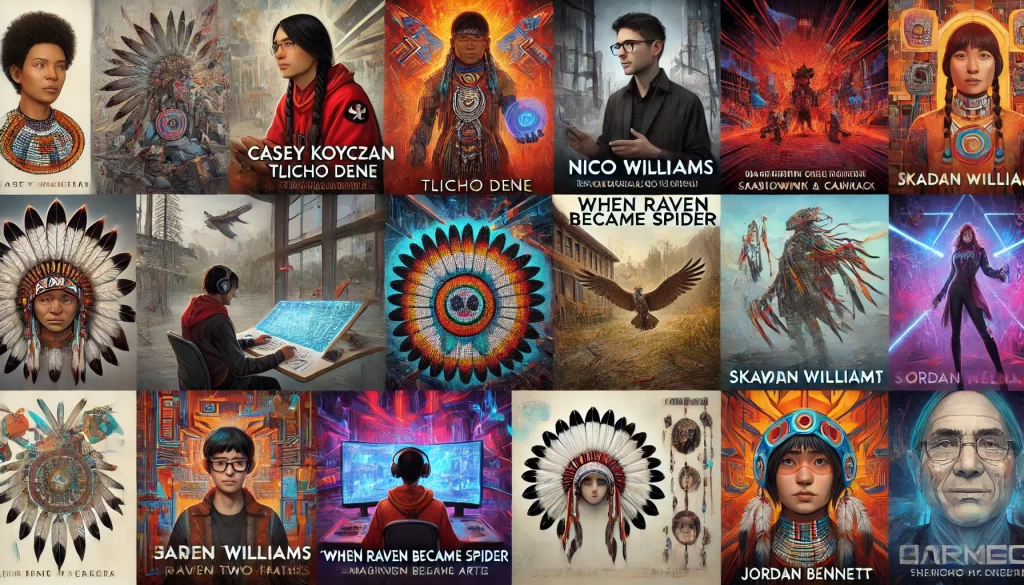
- Nico Williams
Nico Williams is an Anishinaabe digital and beadwork artist from Aamjiwnaang First Nation, Ontario, Canada. His work explores Indigenous identity and the intersection of traditional crafts with digital art.
- Skawennati
Skawennati is a Mohawk multimedia artist from Kahnawake, Quebec, Canada. She is renowned for her work in digital media, including machinima (movies made in virtual environments), virtual worlds, and cyberpunk art..
- Raven Two Feathers
Raven Two Feathers is a Cherokee, Seneca, and Cayuga multimedia artist based in Seattle, Washington, USA. They use digital art to tell stories that reflect their Indigenous heritage and personal experiences.
- Jordan Bennett
Jordan Bennett is a Mi’kmaq artist from Stephenville Crossing, Newfoundland, Canada. He works with various digital and traditional mediums, including installation, painting, and digital design.
virtual Exhibitions of Indigenous Art
Virtual exhibitions are a great way to showcase Indigenous art to people worldwide. These online galleries let visitors explore art from their homes. Platforms like Woca host digital innovations in Indigenous art through virtual exhibitions where users can view high-quality images of artworks, read about the artists, and even join virtual tours. This makes Indigenous art accessible to a global audience and helps preserve these works for future generations. Here are some examples and their latest updates.
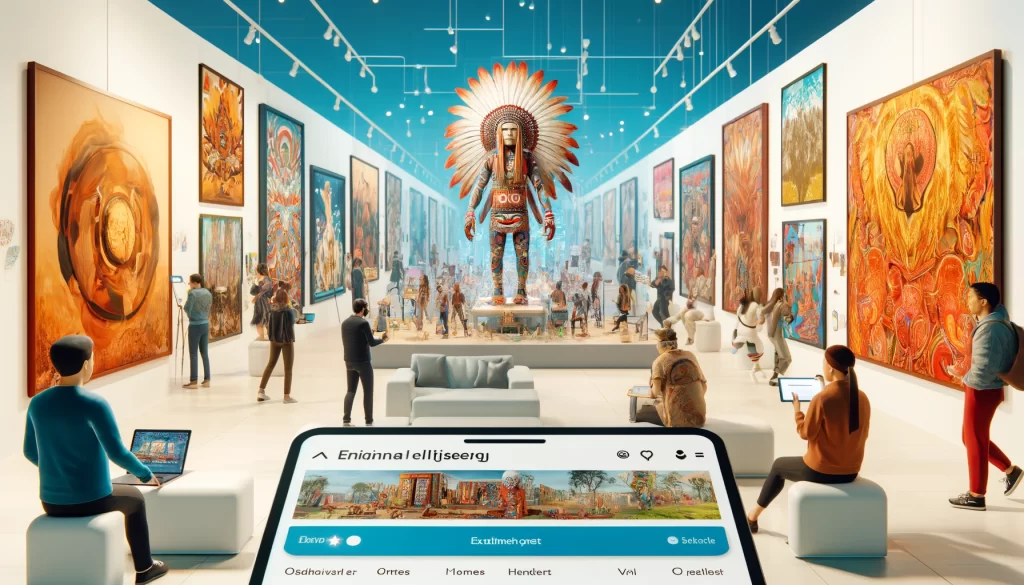
- “Unceded: Voices of the Land” by Douglas Cardinal
Platform: Virtual Museum of Canada
This exhibition, curated by Indigenous architect Douglas Cardinal, celebrates the resilience and creativity of Indigenous peoples in North America. It features digital art, photography, and storytelling about the significance of land and culture.
Latest Update: In 2022, the exhibition added interactive elements like 360-degree views of important Indigenous landscapes and audio recordings of elders sharing their stories.
- “Aboriginal Screen-Printed Textiles from Australia’s Top End”
Platform: National Museum of Australia
This exhibition showcases colorful screen-printed textiles by Indigenous artists from Australia’s Top End. It includes high-resolution images and detailed descriptions of each piece, along with artist biographies.
Latest Update: In 2023, the exhibition started a virtual workshop series where visitors can learn screen-printing from the artists. These workshops include live demonstrations and Q&A sessions.
- “Our Land, Our Art” by Inuit Art Foundation
Platform: Inuit Art Foundation Website
This exhibition highlights contemporary Inuit art from Canada’s Arctic regions. It features sculptures, prints, and digital media that reflect Inuit artists’ unique perspectives.
Latest Update: In 2023, the Inuit Art Foundation added an augmented reality (AR) feature. Visitors can use smartphones or tablets to view 3D models of the artworks in their own spaces and watch artist interviews.
- “First Nations Art at the AGO”
Platform: Art Gallery of Ontario (AGO) Website
The Art Gallery of Ontario offers a virtual tour of its collection of First Nations art. The exhibition includes traditional and contemporary pieces from various Indigenous communities in Canada.
Latest Update: In 2022, AGO introduced live virtual tours led by Indigenous curators and artists. These tours provide real-time insights and discussions about the artworks.
- “Honoring the Ancient Ones” by the Museum of Anthropology at UBC
Platform: Museum of Anthropology at UBC Website
This exhibition features ancient and contemporary Indigenous art from the Northwest Coast of Canada. It includes totem poles, carvings, and masks.
Latest Update: In 2023, the Museum of Anthropology added a virtual reality (VR) component. Visitors with VR headsets can explore the artworks in a 3D environment that replicates the museum’s physical space.
Online Platforms for Learning Indigenous Arts
Online platforms are essential for promoting Indigenous art and connecting artists with audiences. Websites like Woca provide a space for artists to display their work, share their stories, and sell their pieces. Social media platforms like Instagram and Facebook also play a significant role in spreading awareness about Indigenous art. Digital innovations in Indigenous art help artists reach new audiences, engage with fans, and build their online presence.
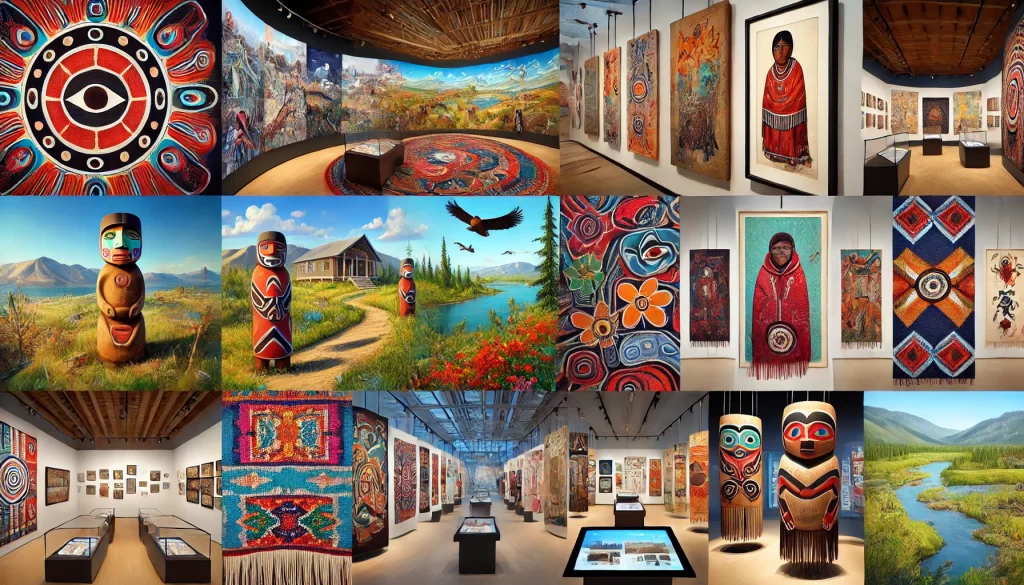
In addition to social media giants like Facebook and Instagram, there are specialized platforms dedicated to the education and promotion of Indigenous arts. These platforms offer courses, resources, and community engagement opportunities for learners interested in Indigenous art forms. Here are three examples:
1. Woca
How It Works: Woca is an online platform dedicated to preserving and promoting Indigenous arts. It offers a variety of educational resources, including video tutorials, articles, and interactive workshops led by Indigenous artists. Users can access lessons on traditional techniques, contemporary practices, and cultural contexts of Indigenous art.
What They Do: Woca provides a space for learning and engagement with Indigenous art through:
- Courses and Tutorials: Step-by-step guides and video lessons on various art forms such as beadwork, carving, painting, and digital art.
- Workshops and Webinars: Live and recorded sessions where users can interact with instructors, ask questions, and participate in hands-on activities.
- Resource Library: Articles, e-books, and other materials that provide historical and cultural insights into Indigenous art practices.
2. Indigenous Arts Collective of Canada (IACC)
How It Works: The Indigenous Arts Collective of Canada is a platform that offers educational resources and programs to support the learning of Indigenous arts. It connects learners with Indigenous artists and provides opportunities for direct mentorship and guidance.
What They Do: IACC focuses on fostering a deep understanding of Indigenous arts through:
- Mentorship Programs: Connecting learners with experienced Indigenous artists for one-on-one guidance and support.
- Online Classes: Offering structured courses on traditional and contemporary Indigenous art forms, including basket weaving, pottery, and textile arts.
- Cultural Exchanges: Facilitating virtual exchanges and collaborations between Indigenous artists and learners worldwide to share knowledge and techniques.
3. Art Alive
How It Works: Art Alive is an online learning platform that collaborates with Indigenous artists and cultural educators to provide comprehensive courses on Indigenous arts. The platform emphasizes the cultural significance and traditional knowledge embedded in the art forms.
What They Do: Art Alive supports learning through:
- Video Courses: In-depth video lessons covering various Indigenous art techniques, such as carving, beadwork, and painting, taught by master artists.
- Interactive Learning: Tools and features that allow users to engage with instructors, submit their work for feedback, and participate in discussions with peers.
- Cultural Context: Providing background information on the cultural and historical contexts of the art forms, ensuring that learners appreciate the broader significance of the skills they are acquiring.
Exploring Online Marketplaces for Indigenous Art: Woca, Etsy, and Redbubble
Woca’s online marketplace is another example of how technology is used to promote Indigenous art. Artists can create profiles, upload images of their work, and sell their pieces directly to buyers. This platform not only helps artists reach a wider audience but also supports their livelihoods by providing a space to showcase and sell their art. Digital innovations in Indigenous art enable such platforms to thrive, ensuring that Indigenous artists can leverage technology to sustain their craft and cultural expression.
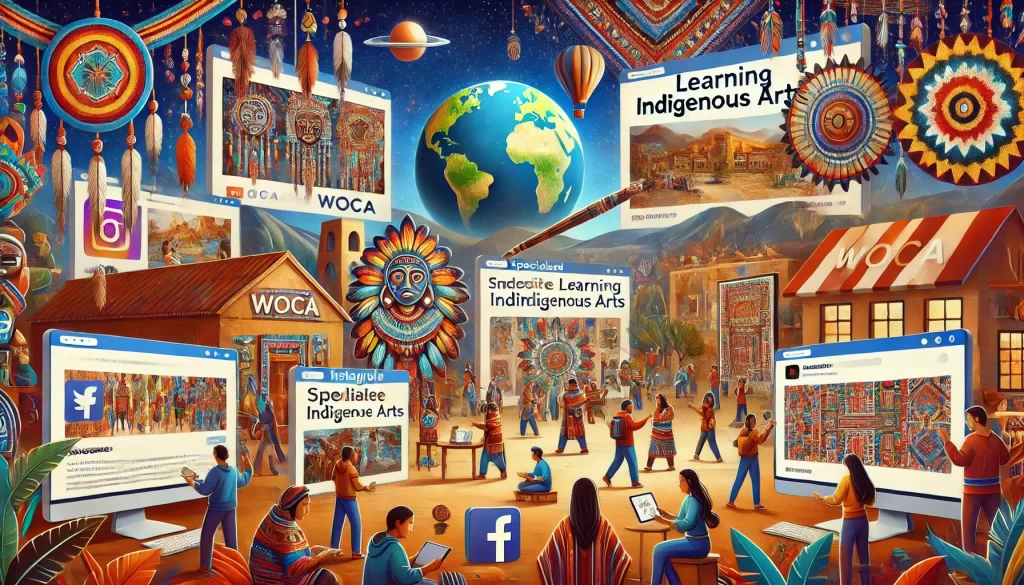
- Woca Marketplace
How It Works: The Woca Marketplace allows Indigenous artists to create profiles, upload images of their art, and list their pieces for sale. Buyers can browse the marketplace, read about the artists, and purchase artworks directly. The platform handles transactions securely, ensuring artists are paid promptly. Woca also promotes featured artists and collections, helping to increase visibility.
- Etsy
How It Works: Etsy is an online marketplace for handmade and vintage items, including Indigenous art. Artists can set up their own shops, list their products, and manage sales. Etsy provides tools for marketing, such as promoted listings and social media integration, helping artists reach a broader audience. The platform also offers analytics to track sales and customer engagement.
- Redbubble
How It Works: Redbubble is a print-on-demand marketplace where artists can upload their designs, which are then printed on various products like t-shirts, posters, and phone cases. Indigenous artists can use Redbubble to create and sell unique designs without worrying about inventory or shipping. The platform handles production and delivery, allowing artists to focus on creating new work. Artists earn a commission on each sale, providing an additional revenue stream.
Conclusion
Technology is transforming the way Indigenous art is created and shared. Digital tools, virtual exhibitions, and online platforms like Woca are making Indigenous art more accessible and helping to preserve it for future generations. By embracing these digital innovations in Indigenous art, Indigenous artists can continue to share their stories, celebrate their cultures, and inspire audiences around the world.
